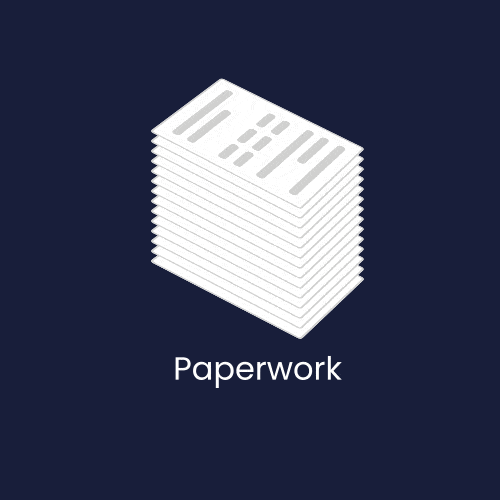In recent years, the rise of e-commerce and the increasing demand for same-day or next-day deliveries have significantly amplified the importance of Transportation in last-mile delivery. Customers are expecting fast and more flexible delivery options. Last-mile delivery poses unique challenges due to the complexities of navigating urban environments, traffic congestion, multiple stops, and the need to meet tight delivery windows.
What is Transportation Management System (TMS)?
Transportation Management System (TMS) is a specialized solution designed to streamline and optimize transportation and logistics operations. It is a comprehensive tool that helps businesses efficiently manage and coordinate the various aspects of transportation, including planning, execution, and optimization. TMS provides a centralized platform that allows organizations to manage their transportation processes, collaborate with carriers and suppliers, track shipments, and gain visibility into their supply chain.
Key features of Transportation Management System typically include:
- Shipment Planning and Optimization
- Carrier Management
- Freight Booking and Execution
- Freight Rate Management
- Visibility and Tracking
- Analytics and Reporting
Also read: Why use Route Optimization for business.
Implementing Transportation Management System brings several benefits to organizations, including:
- Improved operational efficiency and cost reduction through optimized routing, load consolidation, and better carrier selection.
- Enhanced visibility and control over transportation processes, leading to improved customer service and on-time delivery performance.
- Streamlined collaboration and communication with carriers, suppliers, and other stakeholders.
- Better decision-making through real-time data and analytics-driven insights.
- Automation of manual tasks, reducing human errors and administrative overhead.
- Compliance with transportation regulations and industry standards.
What is Route Optimization?
Route optimization in TMS refers to finding the most efficient and cost-effective routes for delivering goods to customers in the final leg of the delivery process. The last mile of delivery is often the most challenging and expensive part, as it involves transporting packages from a distribution center or warehouse to the end customer’s location, which could be residential or commercial. Route optimization in last-mile delivery involves leveraging advanced algorithms and technologies to determine the best routes that minimize distance, time, and costs while maximizing delivery efficiency.
Here’s how route optimization works within a TMS:
1. Input Parameters:
The TMS takes into account various input parameters, including the shipment details (such as origin, destination, and quantity), carrier availability, vehicle capacity, delivery time windows, traffic conditions, and any specific constraints or requirements.
2. Optimization Algorithms:
The TMS uses sophisticated optimization algorithms to analyze the input parameters and generate optimal routes. These algorithms consider multiple factors simultaneously, such as distance, time, cost, vehicle capacity utilization, and delivery priorities.
3. Consolidation and Sequencing:
Route optimization in TMS often involves the consolidation of shipments or orders to minimize empty miles and maximize load efficiency. The software groups together orders that can be served by the same vehicle or routed along similar paths. It also determines the optimal sequence of stops to minimize travel time and distance.
4. Real-time Updates:
TMS with real-time capabilities can adapt and optimize routes on the fly. It takes into account dynamic factors such as traffic congestion, road closures, and unexpected changes in delivery requirements. This allows for efficient rerouting and adjustments to ensure timely and efficient deliveries.
5. Integration with Mapping and Navigation:
TMS can integrate with mapping and navigation systems, enabling drivers to access optimized routes and turn-by-turn directions. The integration helps ensure that drivers follow the planned routes accurately and make any necessary adjustments during transit.
Benefits of Route Optimization in TMS include:
1. Cost Reduction:
By optimizing routes, TMS helps minimize fuel consumption, vehicle wear and tear, and labor costs associated with transportation. It enables efficient use of resources, reduces unnecessary detours, and avoids wasteful practices.
2. Time Savings:
Optimized routes reduce travel time, enabling faster deliveries and improved on-time performance. TMS takes into account traffic conditions, congestion, and other factors to ensure efficient routing and minimize delays.
3. Increased Efficiency:
By consolidating shipments and optimizing routes, TMS maximizes vehicle utilization and load capacity. This leads to fewer empty miles, lower carbon emissions, and improved operational efficiency.
4. Enhanced Customer Service:
Route optimization ensures that deliveries are completed within scheduled time windows, improving customer satisfaction and loyalty. TMS provides real-time visibility into delivery status, allowing accurate updates and proactive communication with customers.
5. Scalability and Flexibility:
TMS allows businesses to handle increased delivery volumes and adapt to changing requirements. It can quickly generate optimized routes as the number of shipments or delivery locations fluctuates.
Route optimization in TMS plays a crucial role in maximizing efficiency, reducing costs, and improving customer service in transportation and logistics operations. It leverages advanced algorithms and real-time capabilities to create optimized routes that consider multiple factors, leading to more effective and profitable deliveries.
Conclusion:
Implementing transport management software brings significant advantages to businesses operating in complex logistics environments. With enhanced operational efficiency, cost reduction, improved visibility, and data-driven decision-making, organizations can optimize their transportation processes and achieve a competitive edge. The ability to comply with regulations, provide superior customer service, and scale operations further contribute to the overall benefits of transportation management software. By leveraging these advantages, businesses can streamline their logistics operations, reduce costs, and deliver exceptional service, ultimately driving growth and success in today’s dynamic business landscape.
About nuVizz:
nuVizz enables enterprises to optimize their supply chain management and logistics operations through its innovative modern TMS solution called nuVizz TMS. The company aims to help businesses enhance their operational efficiency, improve visibility, and achieve scalability in their supply chain processes. nuVizz TMS helps improve collaboration and enables seamless communication and coordination among trading partners. By leveraging advanced technologies and data analytics, nuVizz empowers businesses to make informed decisions, automate manual processes, and drive overall transportation operations excellence.

